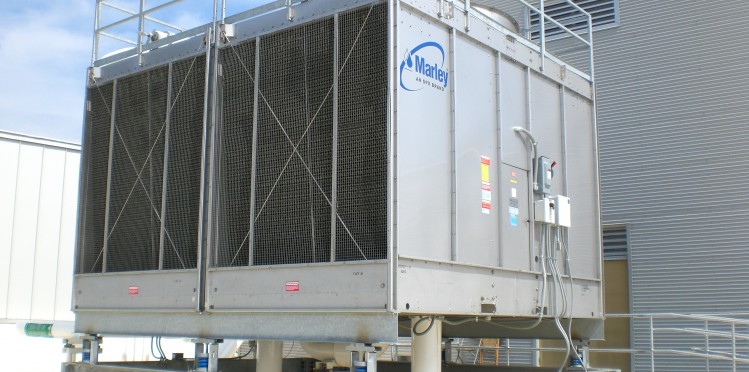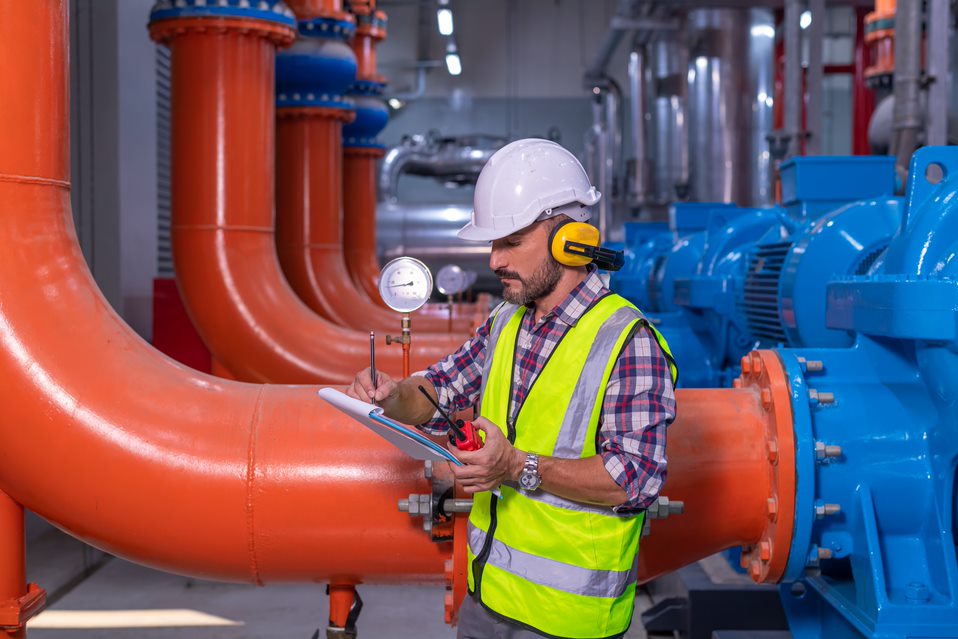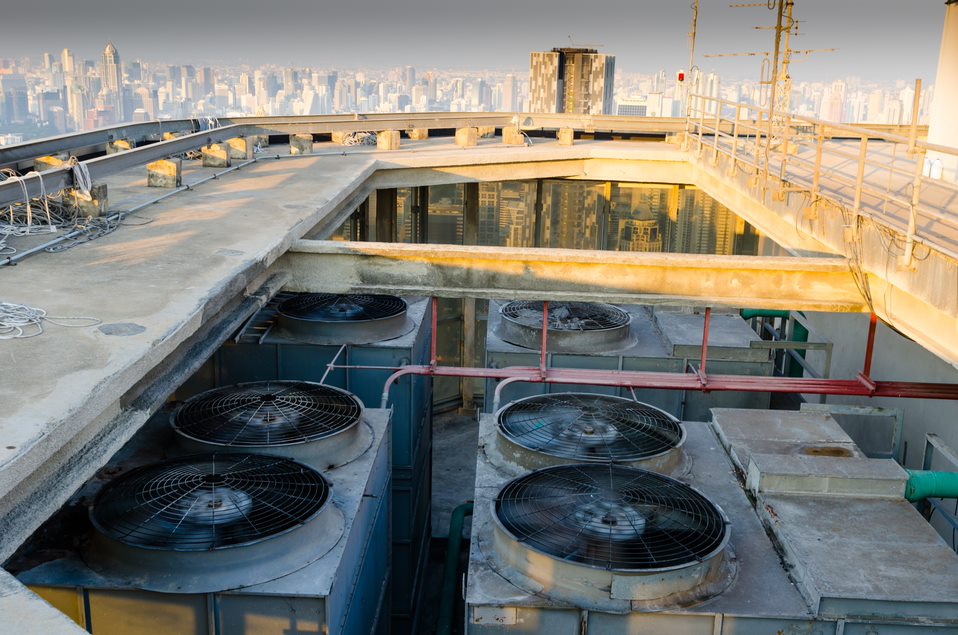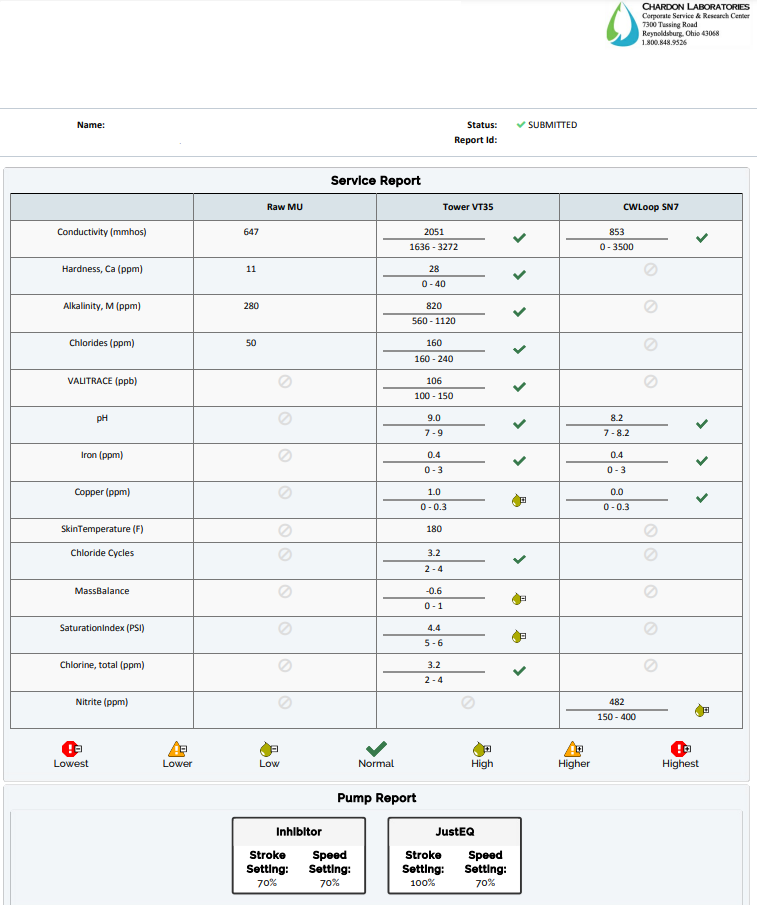
Cooling Towers are an essential part of many HVAC systems. Without their proper start-up, air conditioning systems may not function safely or properly when they are needed most in the warmer months. Also, your water treatment service supplier should be able to help with properly starting your cooling tower for the season.
Updated March 21, 2022
Top 6 Best Practices for a Cooling Tower Start-Up Procedure:
1. Clean
- Clean and remove debris from the basin (If you miss this important step, debris or sludge could be washed into the strainers and cause clogs and recirculating pump problems)
- Scrub and rinse
- Disinfect to help prevent Legionella and other biological growth
- Lastly, make sure that all zones of the header system are open to receive biocide treatment
2. Inspect

- Review the water treatment controller for proper operation
- Initiate each relay to ensure proper operation of each relay
- Check the operation of the flow switch
- Ensure that the bleed solenoid is functioning properly
- Calibrate the sensors in a separate container of city water. (Do not calibrate with system water from the flow line because this line may contain some chemical which could cause a false conductivity reading)
- Check the output of each chemical pump, prime each pump if necessary
- Check the level of the chemical in each batch
- Note that your service technician may have to add water to make it easily “pump-able”. (This is because during the offseason, the water in the batch will tend to evaporate. That will cause the chemical to be abnormally concentrated and may also cause the chemical to become far more viscous than normal)
- Inspect chemical tubing for cracks, then repair/replace if necessary
- Check chemical foot valve, then repair/replace if necessary
- Inspect distribution pan and spray nozzles, then repair/replace if necessary
3. Fill System
- Open the drain and fill valves for a few minutes to properly flush the makeup water line
- After flushing, the makeup line, close the drain valve to begin filling the basin
- Activate circulating pumps and inspect the distribution of water throughout the fill
- Activate bleed solenoid to determine if float valve is working properly
4. Test Water Quality
- Conductivity (mmhos)
- Corrosion and Scale Inhibitor (ppb)
- Alkalinity, M (ppm)
- Hardness, Ca (ppm)
- Chlorides (ppm)
- pH
- Iron (ppm)
- Copper (ppm)
- Skin Temperature (F)
- Chloride Cycles
- Mass Balance
- Saturation Index (Puckorius Scaling Index / PSI)
- Chlorine, free (ppm)
- Chlorine, total (ppm)
- Bromine (ppm)
- Oxygen Reduction Potential / ORP (mV)
Our expert service technicians perform all of these tests on each service visit to protect from scale, corrosion, and biocides. To get help from an expert click here
5. Activate HVAC Chiller System

- Engage all redundant or back-up recirculating pumps
- Inspect system for leaks
- Refer to cooler and chiller manufacturer guidelines for more information
- Put it in operation mode
6. Create Maintenance and Microbial/Legionella Control Plan

Here are the major components of creating the plan:
- Risk assessment
- Diagram water systems
- Establish control measures (follow the ones listed below)
- Set control limits
- Monitor system conditions
- Validate effectiveness with Legionella testing
- Document procedures and results
- Identify areas for improvement and corrective actions
The following are the control measures to minimize the risk of Legionella contamination:
- Eliminate stagnation
- Keep basin clean
- Clean/flush cooling tower
- Install drift eliminators
- Install centrifugal separators
- Check hot-deck and nozzle flow
- Clean/flush condenser strainers
- Utilize corrosion and scale inhibitor chemicals
- Establish an effective biocide program
- Utilize a dispersant
- Test for Legionella
To talk to an expert about our Legionella water management planning or testing click here
Additionally, the Center for Disease Control (CDC) and Occupational Safety and Health Administration (OSHA) have specific guidelines that support the information for our how-to guide above
Learn More About Our Cooling Tower Services
Matt Welsh
Matt Welsh is the Vice President and Water Consultant at Chardon Labs. He helps consult a wide range of customers utilizing various methods of water treatment, from chemical to chemical-free approaches, large and small applications, and across a wide range of geographical influences. With 20 years of water treatment experience, including a wide range of troubleshooting and service in potable water and non-potable HVAC and industrial applications, he is an expert in water treatment chemistry for cooling towers, boilers, and closed-loop systems.
